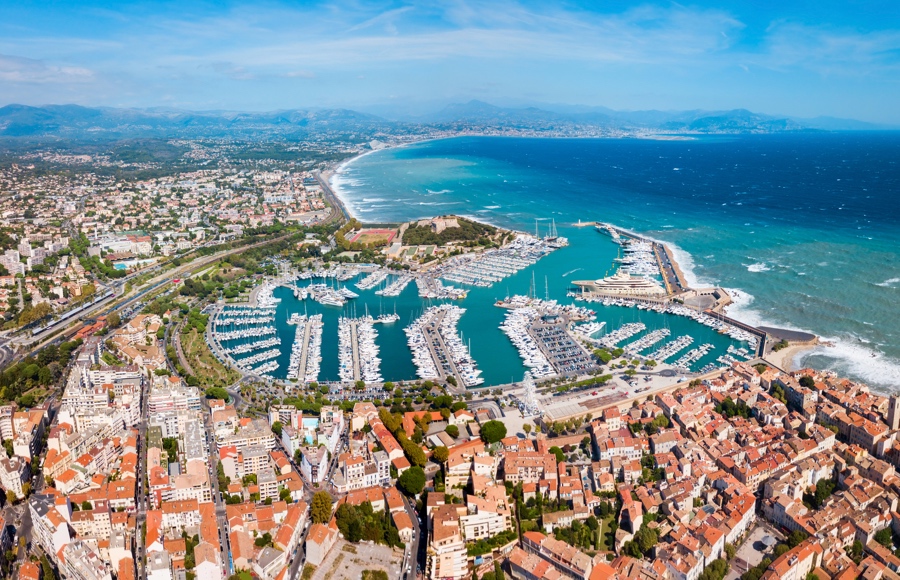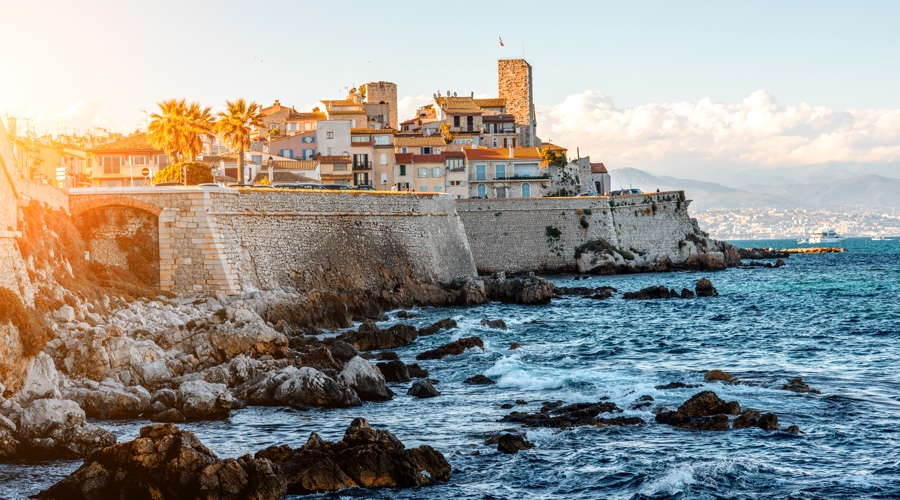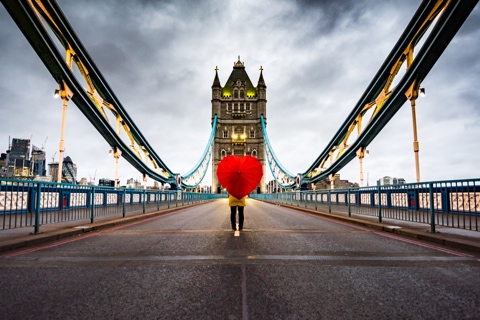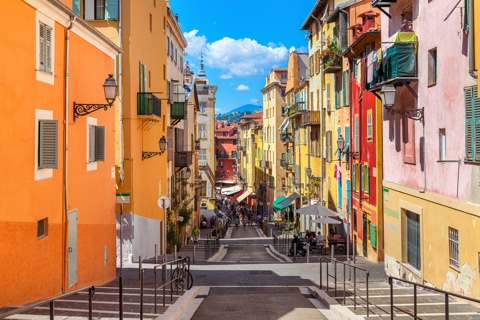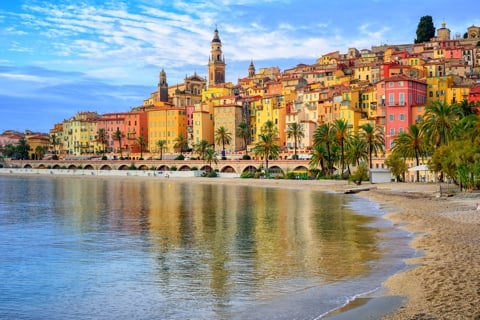The best things to do in Antibes, France
Antibes is the second largest resort city (after Nice), located on the Côte d'Azur, in the Provence region. The name comes from the ancient name Antipolis, which means "the city, situated opposite". This is how it was named by the seafarers who founded it in the 6th century BC. Originally it was a colony of today's Marseille. Later, thanks to its position on the important route from Rome to Gaul, Antibes became the largest city in the region and for a long time was the only fortified town from Marseille to Italy.
Today Antibes offers superb beaches and great tourist sites to its visitors. It is well known for seaside coasts and beautiful bluewater beaches. Also, Antibes has many interesting sites to visit and things to do. Highly appreciated by travellers as a summer destination, Antibes is a good choice for solo visits, summer holidays for couples and a relaxing stay for the families with kids. Even in winter, there are many great things to do in Antibes. Read this article to find out the best things to do in Antibes at any time of the year!
Old Town (Vieil Antibes)
Start discovering Antibes by visiting the old city. It's a wonderful place to go out and shop in the local boutiques and the Provencal market. In its picturesque streets you will find numerous cozy restaurants with delicious French cuisine and wine. Try traditional Mediterranean dishes and fresh seafood from the port situated nearby.
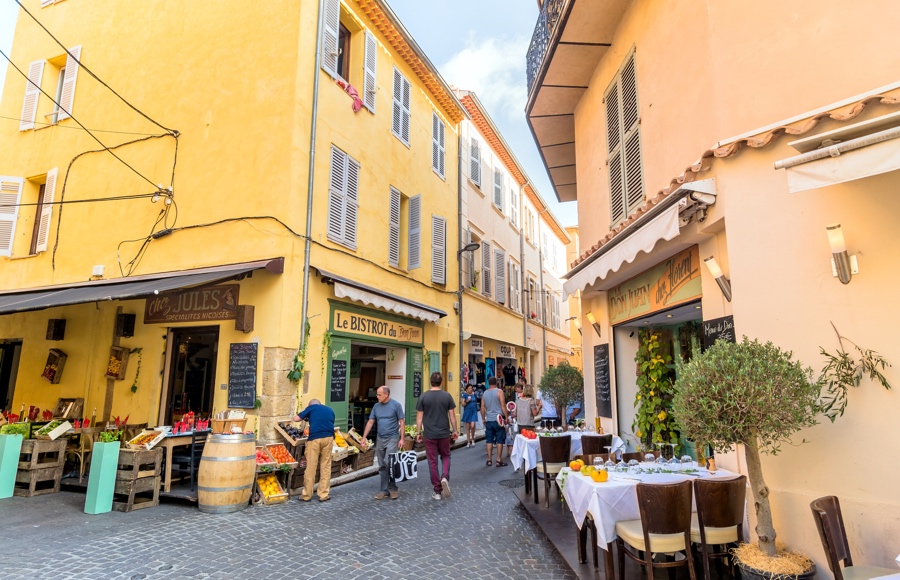
Port Vauban
Port Vauban is an old port of Antibes with its "Billionaire Quay", where the world's most luxurious yachts are located. The harbour next to the port is called Port Vauban and is the largest yacht marina in the Mediterranean. Every year, the most expensive and largest yachts in the world come here and a stroll along the marinas is very impressive. The port of Vauban has a capacity of 2000 places. In Europe it is one of the few ports that can accommodate vessels longer than 50 m.

Grimaldi Castle and Picasso Museum
This castle was founded in the 12th century on the site of earlier Roman fortifications. In the Middle Ages, the castle became the residence of a bishop. From 1385 to 1608 it belonged to Grimaldi, who in the 16th century expanded the castle to its present size. By 1925 the castle was almost destroyed, but the municipality of Antibes bought the building and turned it into a museum.
In 1946, Pablo Picasso was looking for a spacious room to work, the Antibes authorities offered him the Grimaldi Castle. The famous artist worked in it for six months and in gratitude for the hospitality gave the city a painting "Night fishing in Antibes", many drawings and sketches. Now this workd make part of the museum's art collection. The museum has also works of Leger, Modigliani and Picabia.
Fort Carré
The Fort Carré was built in 1565 by order of King Henry II in the northern part of Antibes as a four-pointed star. The purpose of Fort Carré was to defend the border with the nearby county of Nice. The fortress became operational in 1585 and was attacked for the first time in 1592 by the army of the Duke of Savoy.
The fort was a strategic fortress until the 19th century. When Nice was annexed by France in 1860, the border near Antibes disappeared and the army moved to more modern barracks at the foot of Fort Carré. These barracks were used for sports training after the Second World War, and the fort was handed over to the Ministry of Sport as a result.
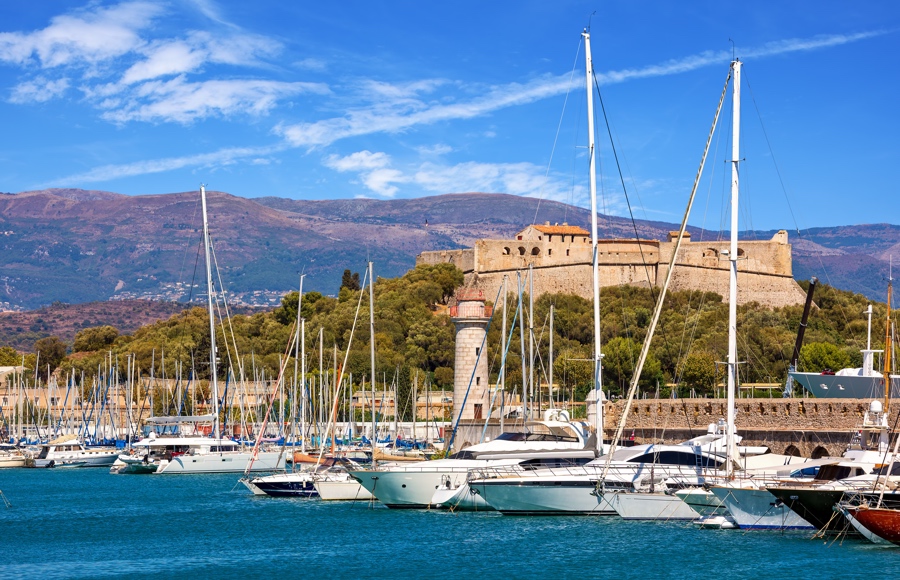
How to visit Fort Carré
Opening hours:
Tuesday - Friday 12:30 - 16:00,
Saturday 10:00 - 16:00
Closed on Mondays and Sundays, as well as January 1, May 1, November 1 and December 25
Entrance fee: 3 €, free until 18 years old
Transport: Bus 14 from the old town
Parking: free parking for 150 cars - parking du Fort Carré
Bastion of Saint-André and the Archaeological Museum
Antibes was for a long time the most fortified city on the coast. The most important of these fortifications is the Bastion of Saint Andre. Today it houses an archaeological museum. To reach the Bastion, walk along the Amiral de Grasse promenade, which also offers a beautiful panoramic view.
The Bastion of Saint-André was built in 1698 by Vauban after the conflict between the French monarch and the counts of Nice. The Bastion consists of two brick galleries with a large terrace at the top. The building was added to the official list of local historical monuments in 1930.
Museum of the Bastion of Saint-André
The history of the archaeological collection exhibited in the museum began in the 16th century, with the discovery of several artifacts of the Gallo-Roman era. Until the 20th century it was a private collection. The first Historical Museum was established in 1928 by the Greek teachers of Cannes, which collected archaeological finds in the Grimaldi Castle. In the 1950s, a large number of findings led to the opening of a museum dedicated exclusively to archaeology. And new museum was inaugurated in 1963. Its collection includes all the finds related to the ittoria of Antipolis from the 7th century BC to the 5th century AD.
Saint Bernardine Chapel
Bernardino degli Albizzeschi, also known as simply Bernardine, (8 September 1380 - 20 May 1444) is a Catholic saint, Franciscan missionary and Italian priest. According to legend, during one of his prayers he saw the image of Christ suffering on the cross. After that Bernardine gave all his money to the poor and on September 8, 1402 at the age of 22 joined the Franciscan order.
On September 8, 1404 he became a priest and spent the next 12 years of his life in seclusion. In 1416 he began his journey on foot, preaching in every town and village on his way. For more than 30 years Bernardine wandered around Italy and gave sermons. He was an important figure in the church and played a major role in 15th century Christianity. His success was outstanding, as a lot of people came to talk to him. He died in 1444 and was canonized six years later.
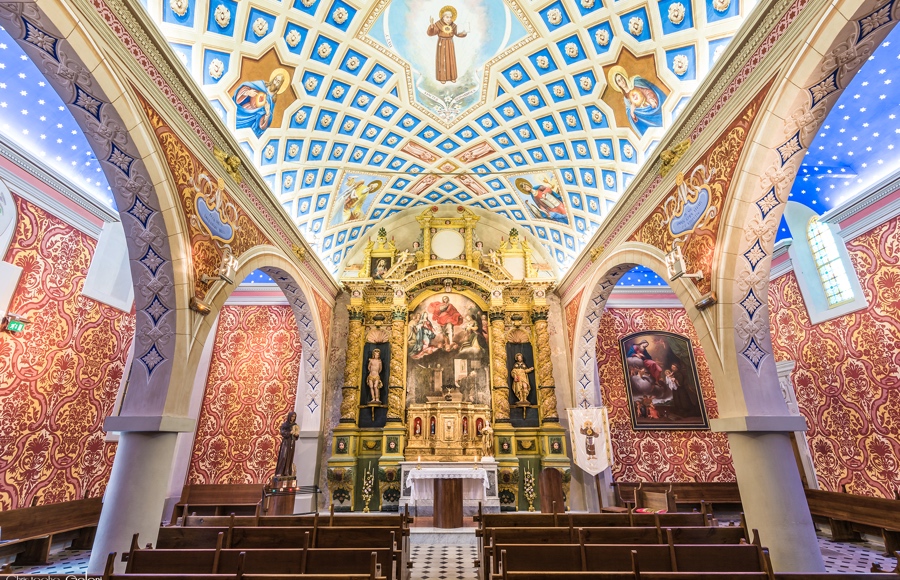
Markets in Antibes
On the local market you should definitely try Provencal tapenadas which is pastes made of ground and grinded capers, olives, and anchovies with local spices. They are served as an appetizer on thin fried or dried slices of bread.
Provence market in Antibes: open daily (except Mondays from 1 September to 31 May) in the morning from 6 to 13 h, cours Masséna.
The Antibes Crafts Market is open from September to mid-June every Friday, Saturday and Sunday from 3pm. From mid June to the end of September the market is open daily except Mondays.
The clothing market is open from 6 to 13, place Amiral Barnaud (Gendarmerie d'Antibes) for Watts and Wakes, Lacan car park, place Jean Aude - Wednesday, Place Dulys in Juan-les-Pins - Friday.
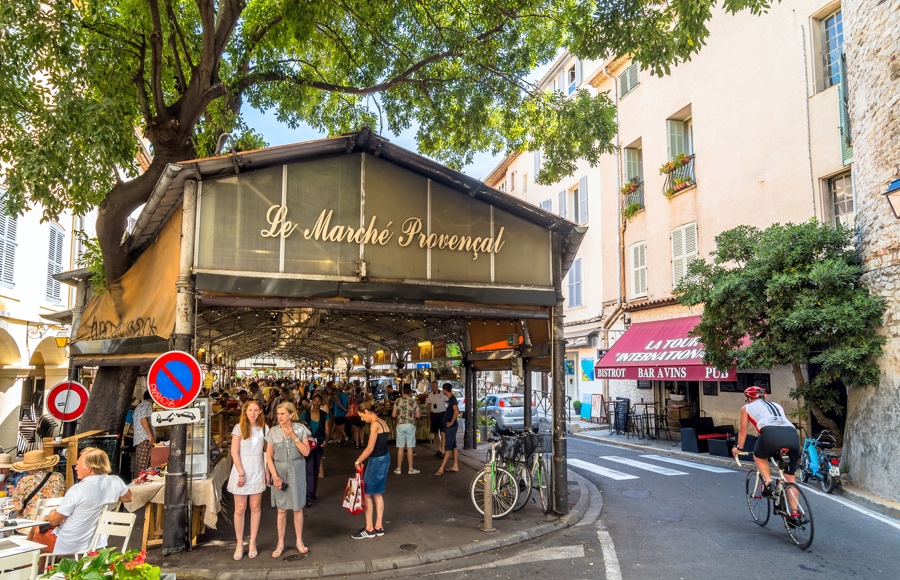
Marineland
In Antibes is situated the famous dolphinarium water park called Marineland. Marineland is the only water park in Europe dedicated to the sea and marine wildlife. Amazing performances involving orcas, seals and dolphins are held in one of the largest swimming pools in the world with stands for 3 thousand spectators.
In Marineland you can walk through a 30-metre long water tunnel, where the inhabitants of the sea abysses float side by side and above your head, from harmless fish to huge sharks. In addition to the ichthyofauna, other animals can also be admired: polar bears and even lemurs. Ticket to the territory of the complex will cost 39 euros, adding another 70 you can swim with dolphins, and for 60 euros the company will make you sharks. Well, and finish a pleasant day of rest and water fun in the water park.
If you have time during your trip to Antibes and the weather is good, make sure you visit the Cap d’Antibes. It is a beautiful peninsula with luxurious villas, beautiful seascapes and small deserted beaches.
At the beginning of the Cap d'Antibes, on the west coast, is situated charming little port, the Port de la Salis. Dating from the beginning of the 20th century, this port can accommodate up to 245 boats. Immediately after the port, a hiking trail of Cap d’Antibes begins. It's about 5 kilometers long and it extends all the way around the Cap. Walk along this path, admire the Mediterranean views and enjoy the picnic on the picturesque cliffs.
Take a picture against the background of Le Nomade sculpture
Almost the most famous attraction in Antibes is the huge sculpture of Le Nomade, located on the quay of Henri Rimbaud in the port of Vauban. Its name can be translated as "wanderer". The sculpture is an 8-metre long image of a human body made of metal letters. According to the plan of the author of the monument of artist Planes, it should symbolize the experience and wisdom of man. Anyway, the monument has become one of the symbols of the city and the entire Cote d'Azur.
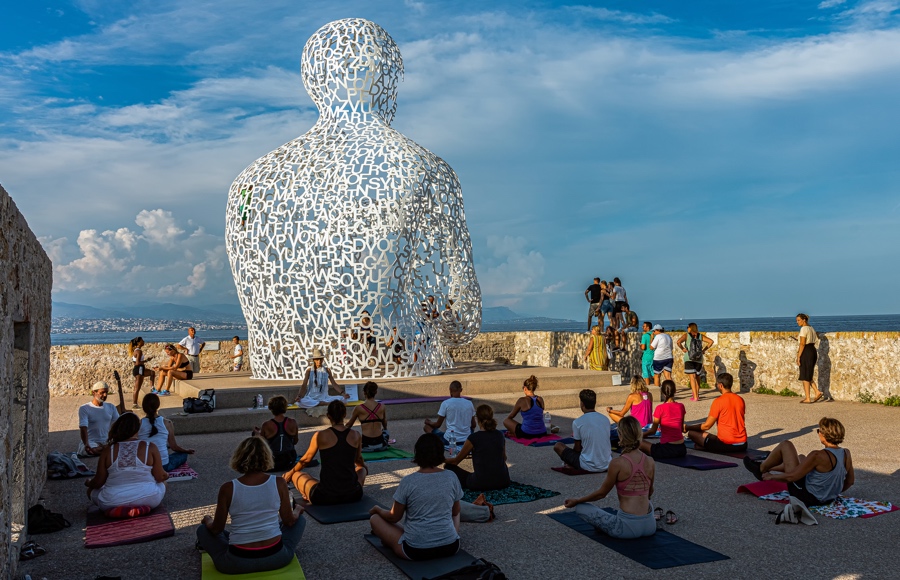
Musée Peynet
Created in 1989 at the initiative of the municipality, the museum welcomes tourists in the shade of the plane trees of the picturesque National Square with more than three hundred works of the artist. Collection includes lithographs, gouaches, Chinese inks, porcelain, dolls, etchings, etc.
The architecture of the museum is based on the octagonal shapes characteristic of the famous kiosk in Valencia. The model of the kiosk is in a good place in the premises. In addition to its rich permanent collection, which allows a rotation of its hanging works, the museum occasionally offers "event" presentations of drawings that may relate to the end of year festivities, summer, the music festival, etc.
Finally, as is customary, the museum offers exceptional exhibitions of the artist's work for Valentine's Day, in order to present to the public more little-known aspects of his work.
This is interesting
- The history of Antibes of the 20th century is associated with the names of writers known throughout the world. Francis Scott Fitzgerald described in his novel Night of Tender the Hotel Du Cap Eden-Roc, located on Cape D'Antibes.
- The writer Nikas Kazantzakis lived and worked in Antibes for some time, in particular, here was written the novel "Alexas Zorbas", which served as a plot for the famous Hollywood film "The Greek Zorb", filmed in 1964.
- The writer Graham Green spent the last quarter of his life, from 1966 to 1991, in Antibes.
- Guy de Maupassant, who often came to Antibes to his native land, kept in the port a small yacht "Dear Friend". Now there are the giant yachts Pelorus of Roman Abramovich and Octupus of Microsoft founder Paul Allen.
How to get to Antibes from the airport
Taxi. The most expensive way: 50-70 EUR.
Bus. Bus #250 Express (Nice - Vallauris) departs from both terminals, there are stops in Antibes and João Le Pena. The ticket costs 11 EUR.
If you want to save money, you can get out of Terminal 1 (from Terminal 2 you can take a free shuttle to Terminal 1) and walk to the "Aeroport Promenade" public transport stop. You need bus number 200 (Nice - Cannes), ticket price is only 1,5 EUR. The bus comes from the center of Nice, so it can be full of passengers. Schedule and routes of other buses can be found on this site.
Start discovering Antibes by visiting the old city. These are picturesque streets, cozy restaurants, French cuisine with wine and seafood from the port nearby. Train. The nearest station from the airport, Nice-Saint-Augustin, is 1.2 km (15 minutes walk) from Terminal 1. It takes 20-25 minutes to go to Antibes by train from this station (3.7 EUR).
